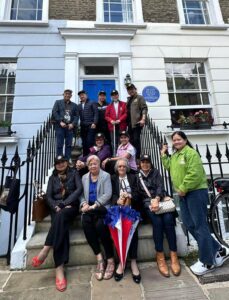By Mari-An Santos
The long-standing Filipino tradition of visita iglesia — that is, visiting seven churches on Holy Thursday in solemn commemoration of Christ’s passion and death — can be traced to a tradition initiated by St. Philip Neri in 1553, wherein he led the faithful to pray in the seven basilicas of Rome.
You can continue this tradition in the UK by visiting some Roman Catholic churches located in England and Wales. Here, we make a suggested itinerary, with quite a number of listed churches. What is a listed building? Adjudged from Grade I to III, listed buildings are placed on a Statutory List of Buildings of Special Architectural or Historic Interest and are protected from any large departures from their original design.
England
The Church of Our Lady of the Assumption and the English Martyrs, Southeast Cambridge
The church was built between 1885 and 1890 in the 19th century gothic revival style. It was consecrated in October 1890.
The west bell tower with a 65-metre spire is a Cambridge landmark.
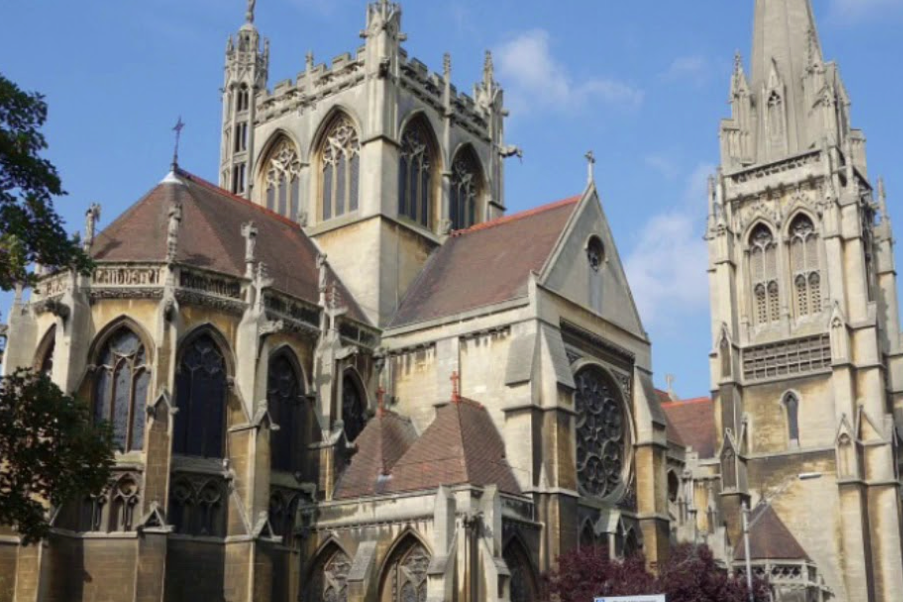
The sculpture above the altar portrays the relief of the Holy Souls in Purgatory through the intercession of Our Lady and the angel who comforted Jesus in the Garden of Gethsemane.
The English martyrs died between 1535 and 1681, many of whom were residents of the university. Within the church, they are arranged in two groups: the clergy on the South side with most notably, St. John Fisher; the laity on the North side, with St. Thomas More.
The National Catholic Shrine and Basilica of Our Lady of Walsingham, Houghton St Giles, Norfolk
Built in 1325, the basilica was built in honour of Saint Catherine of Alexandria, the patron saint of pilgrims to the Holy Land. It’s commonly known as the Slipper Chapel, as pilgrims used to stop here to attend Mass before slipping off their shoes and walk the Holy Mile into Walsingham. The chapel was declared a minor basilica by Pope Francis in 2015.
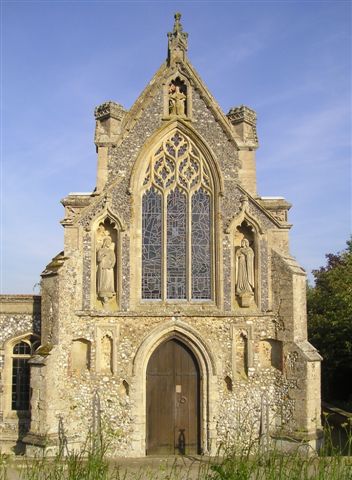
The chapel fell into disuse during the Reformation and the statue of Our Lady of Walsingham was taken to London and burnt. In 1896, the chapel was bought by Charlotte Pearson Boyd, an Anglican who converted to Catholicism, and restored it for Catholic use.
During the pilgrimage season in the UK, some 150,000 pilgrims visit the Slipper Chapel where the statue of Our Lady of Walsingham is enthroned.
Our Lady of the Annunciation, King’s Lynn, Norfolk
The location was originally founded in 1778 as the Church of Our Lady of the Annunciation. From 1897 to 1934, it also served as the pontifical shrine of Our Lady of Walsingham — with a replica of the Holy House of Nazareth at Loreto.
The foundation for the church was laid in 1896, after the old church, opened in 1845, had been demolished.
Among the contributors to the construction were the future King Edward VII (then Prince of Wales), and the kings of Spain and Italy.
It was opened in June of 1897.
The Catholic Cathedral of Our Lady Immaculate and St. Thomas of Canterbury, Northampton
Christian worship in Northampton dates back to mid-Saxton times.
In October 1825, a small chapel was built dedicated to St. Andrew. In 1844, a new chapel was built dedicated to St. Felix. In 1864, an extension was built — the current nave — and was dedicated to Our Lady Immaculate and St. Thomas of Canterbury. It is built in the Gothic revival style of architecture.
In 1948, part of St. Andrew’s was demolished for the cathedral’s extension. Of the original chapel, the portion that includes the altar remains, located in the present-day sacristy and the chapter room.
Wales
St. Peter’s Church, Cardiff
St. Peter’s is one of the oldest Catholic parishes and the oldest surviving Roman Catholic Church in Cardiff.
In 1854, the Rosminians (of the Institute of Charity) arrived in Cardiff. The foundation stone was laid in August 1860 and almost exactly a year later, it was opened — but without a tower, presbytery, nor stained glass windows.
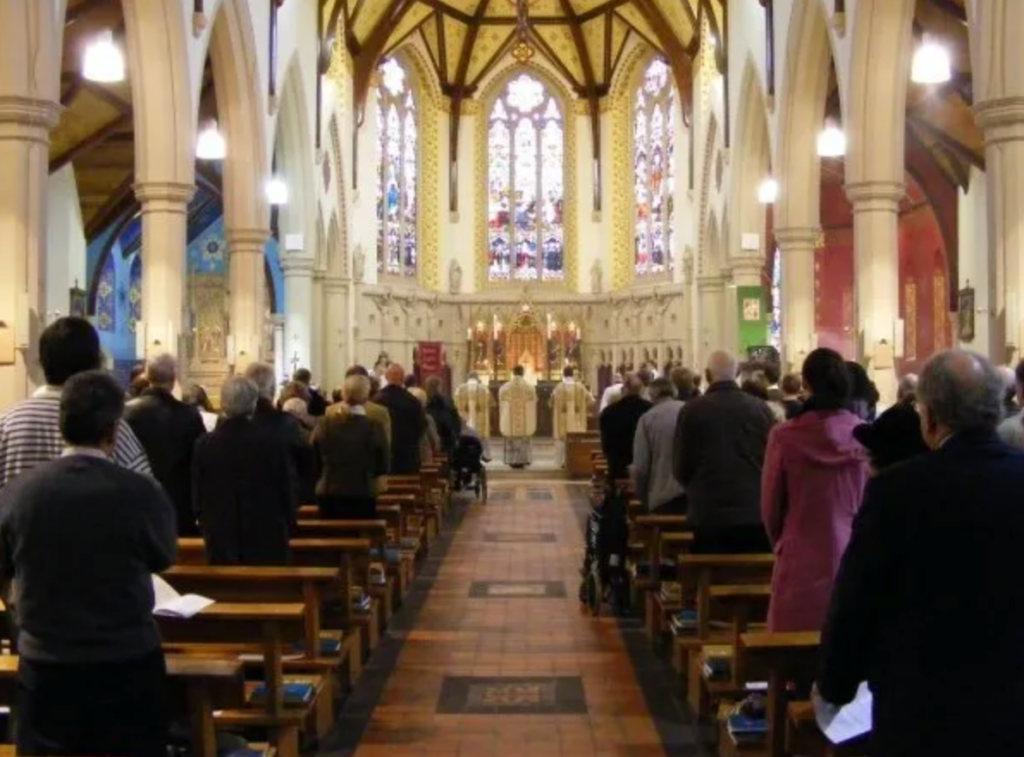
In 1873, the presbytery was built; in 1882, stained glass windows were installed in the sanctuary; in 1883, the tower was completed.
St. Dyfrig’s Church, Treforest, Pontypridd
St. Dyfrig was an abbott, bishop, and hermit who had been a prominent Celtic saint in Wales since the 5th century.
Irish immigration to the South of Wales increased Catholic presence in the 1840s. The growing population necessitated the building of a church, the first of which was built in 1868 at Bridge Street. By 1926, a new church was constructed, then consecrated in 1927 on Broadway.
The design is a variation of the early Christian style of basilica theme with brick walls and a slate roof with coped gables.
St. Melangell Shrine Church and Centre, Pennant Melangell
Saint Melangell was an Irish girl who travelled to the Tanat Valley in Wales to live as an hermit in the 7th century. She is the patron saint of hares and rabbits. According to legend, she saved a hare that was being hunted by Brochwel, Prince of Powys. Moved by her courage and sanctity, the prince gave St. Melangell the valley where she founded a small religious community.
The ancient shrine sits on a Bronze Age site and is one of the most remote in Britain, hidden in the Berwyn mountains. Although it is now part of the Anglican Church in Wales, many Catholics and Orthodox visit it each year.
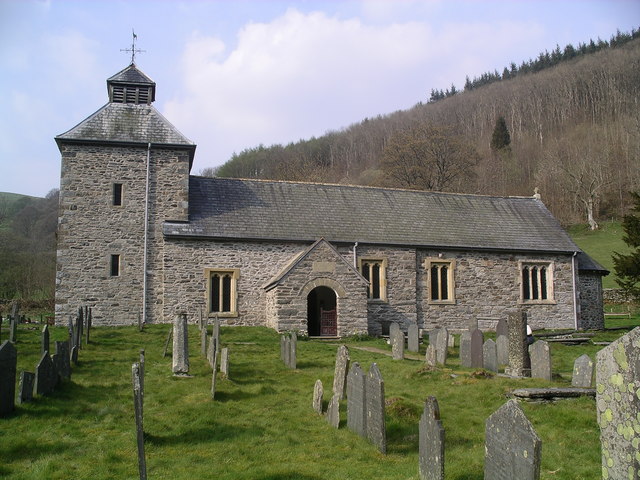
The architecture is that of a simple Norman church. The present stone church replaced an original wooden structure. The oldest church features are the doorway and narrow lancet window in the North wall from the 11th century, and the font from the 12th century. The shrine was constructed between 1160 to 1170 to house the saint’s relics, as her burial site was also discovered in the area.






